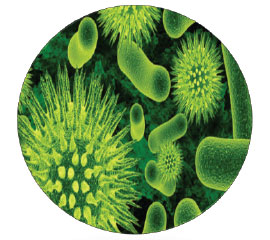
The progress achieved by modern medicine in the past 70 years is at serious risk of coming undone. Already today more than half a million deaths annually are attributable to antimicrobial resistance – a number projected to rise to 10 million in 2050 if no action is taken. Solutions to contain this issue need to reflect the broad ecological nature ofAMR, which require a multi-sectorial response, including management of the medicines’ pathway from the manufacturing facility to the patient's bedside. Assuring quality, safety, and effectiveness of antibiotics need to go hand-in-hand with data generation on antibiotic use, resistance levels, and patients’ access to effective antibiotics. As more data is generated to reveal the magnitude of the problem, it shows that thepost-antibiotic era may already have begun. Every year, 214,000 newborn sepsis deaths are estimated to be directly attributable to bacteria that are resistant to available antibiotics. That is roughly one third of all neonatal sepsis deaths. In the last years, antibiotic resistance has started to compromise the effectiveness of carbapenems – a last-line class of antibiotics used against serious bacterial infections. According to a study from the Southeast Asian region, more than 75% of Acinetobacter isolates, 30% of Klebsiellaisolates, and 10% of E. coli isolates displayed resistance to carbapenems. Of particular concern is the increasing prevalence of carbapenem-resistant Enterobacteriaceae(CRE), as mortality rates in patients with CRE infections are high.Another study done in health facilities in the African region detected 100% resistanceto ampicillin in Klebsiella sepsis isolates.
This crosscuttingnature of the issue means that it hasdirect consequences for our social andeconomic development.In 2015, countries adopted the GlobalAction Plan on Antimicrobial Resistance atthe World Health Assembly, as a blueprintand guideline for the development andimplementation of National Action Plans onAntimicrobial Resistance. Recognition ofthe threat AMR poses to the successfulfulfilment of the Sustainable DevelopmentGoals propelled the topic to the level ofHeads of States at the United NationsGeneral Assembly in September 2016.Following HIV/AIDS, non-communicablediseases, and Ebola, AMR is only the fourthhealth issue to ever be brought up at theGeneral Assembly as a matter of urgentconsideration. The combination of the cross-cuttingnature of AMR and recent politicaldevelopments underline the need to involveactors that previously haven't been directlyengaged with the topic. The increasingpolitical and technical attractiveness ofAMR can be helpful for this broaderengagement, but that may not be enough.Means of implementation to turn words intoaction are essential.
Since 1987, no new class of antibiotics has been discovered. Lack of profitability andmajor scientific bottlenecks has meant that pharmaceutical companies have withdrawnin big numbers from the anti-infectives research and development (R&D) field. Moving away from the current patentbased innovation model and designing incentives and investment strategies that can help overcome the scientific and financial bottlenecks is urgently needed, but is currently subject of intense debate by key stakeholders. New approaches are needed not only in R&D, but also in the way we manage antibiotics. Environmental pollution from antibiotic production sites, substandard quality of antibiotics, and unnecessary use in human medicine and livestock production are just some of the drivers of AMR, which needs to be addressed. Antibiotic stewardship measures need to be considered and developed at every step of the antibiotic lifecycle – from development, to production, to use. Such measures need however to be balanced carefully against the need to ensure universal access to effective antibiotics for all in need. Some populations still haven't even entered the antibiotic era. It is estimated that half of the one million deaths in children under 5 years of age from pneumonia every year could have been averted had they had access to the necessary antibiotics. Within health systems, antimicrobial stewardship programmes aiming to minimise unnecessary use of antibiotics and limit the spread of resistant bacteria need to be anchored within an integrated strategy for drug safety monitoring. Such programmes include training of doctors, pharmacists, and others handling antibiotics to do the necessary benefit–risk assessment,as well as to use standard treatment guidelines to decrease irrational use of antibiotics. Likewise, data generation on AMR on resistance levels and antibiotic use, but also the availability of antibiotics, will require context-specific new ways of thinking to fill existing significant knowledge gaps. In addition, increasing in-country technical expertise is crucial – particularly in resource-poor settings – to conduct pilot studies to inform countries' situation analyses.
Disproportionally greater reporting on antimicrobial treatment failure can be an indication of two major public health issues:presence of antimicrobial resistance and/ormedicines of poor quality. The complexityemerges with the latter being a direct driverof the former. Detection of observed-to expectedratios of reported clusters ofadverse events can be an enabling factor inidentification of resistance spread patterns inthe respective area.Use of poor quality medicines containingsub-therapeutic doses of the activepharmaceutical ingredient can express itselfclinically with expected antipyretic effectwhile prolonging the illness period. Suchmedicines often fly under the radar of thepharmacovigilance reporting system whiledriving bacterial resistance. Pattern interpreting algorithm analysis thereforeneeds to carefully account for antimicrobialsof poor quality that can contribute tostatistical bias.This and other approaches in datageneration can help bridge the knowledgegap in antimicrobial surveillance.Pharmacovigilancetools can support theWHO's efforts to strengthen the evidencebase through enhanced global surveillanceand research coordinated via the recentlyestablished Global AMR SurveillanceSystem. Pharmacovigilance systems in allhigh-income countries and in manylow- and middle income countriescan directly assist and inform both policiesand medicines regulatory processes whendeveloping a National Action Plan on AMR.Pharmacovigilance data collection andregulatory strengthening therefore has acrucial role to play to catalyse the urgentlyneeded systemic and cultural change in howwe can manage and use antibiotics to ensuretheir effectiveness and longevity forgenerations to come.
Source: Uppsala Monitoring Center
2016 © The Pharma World. All Rights Reserved.